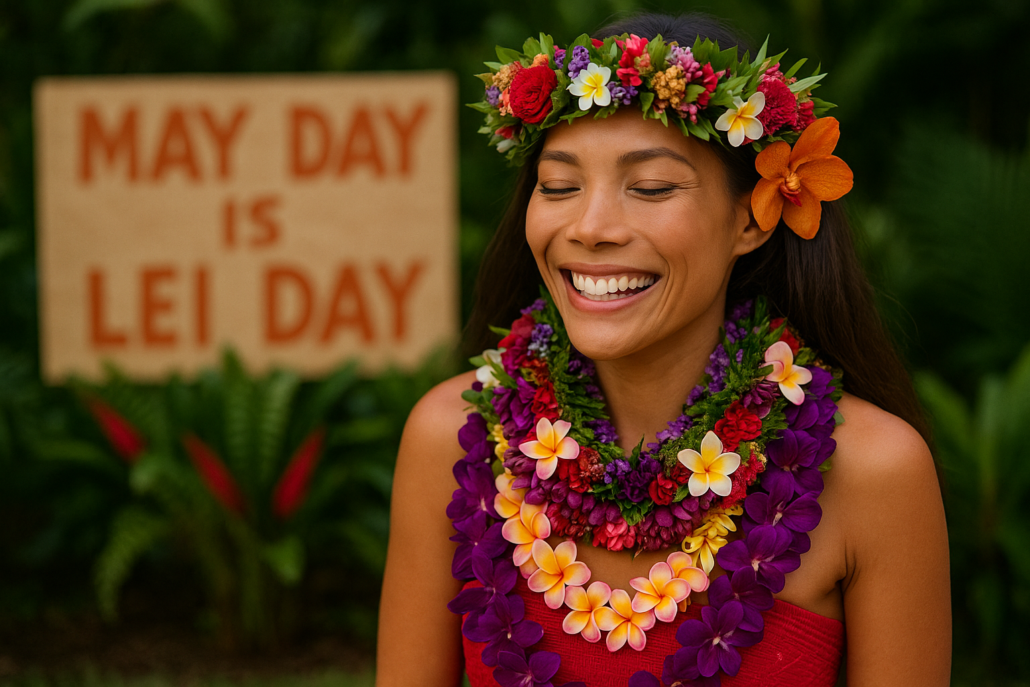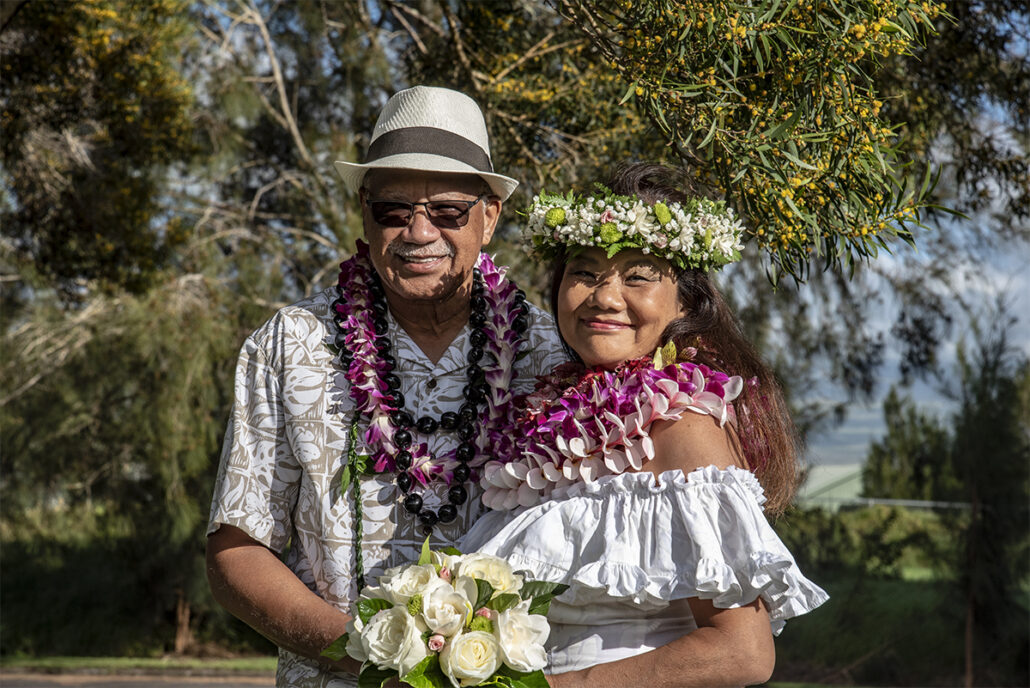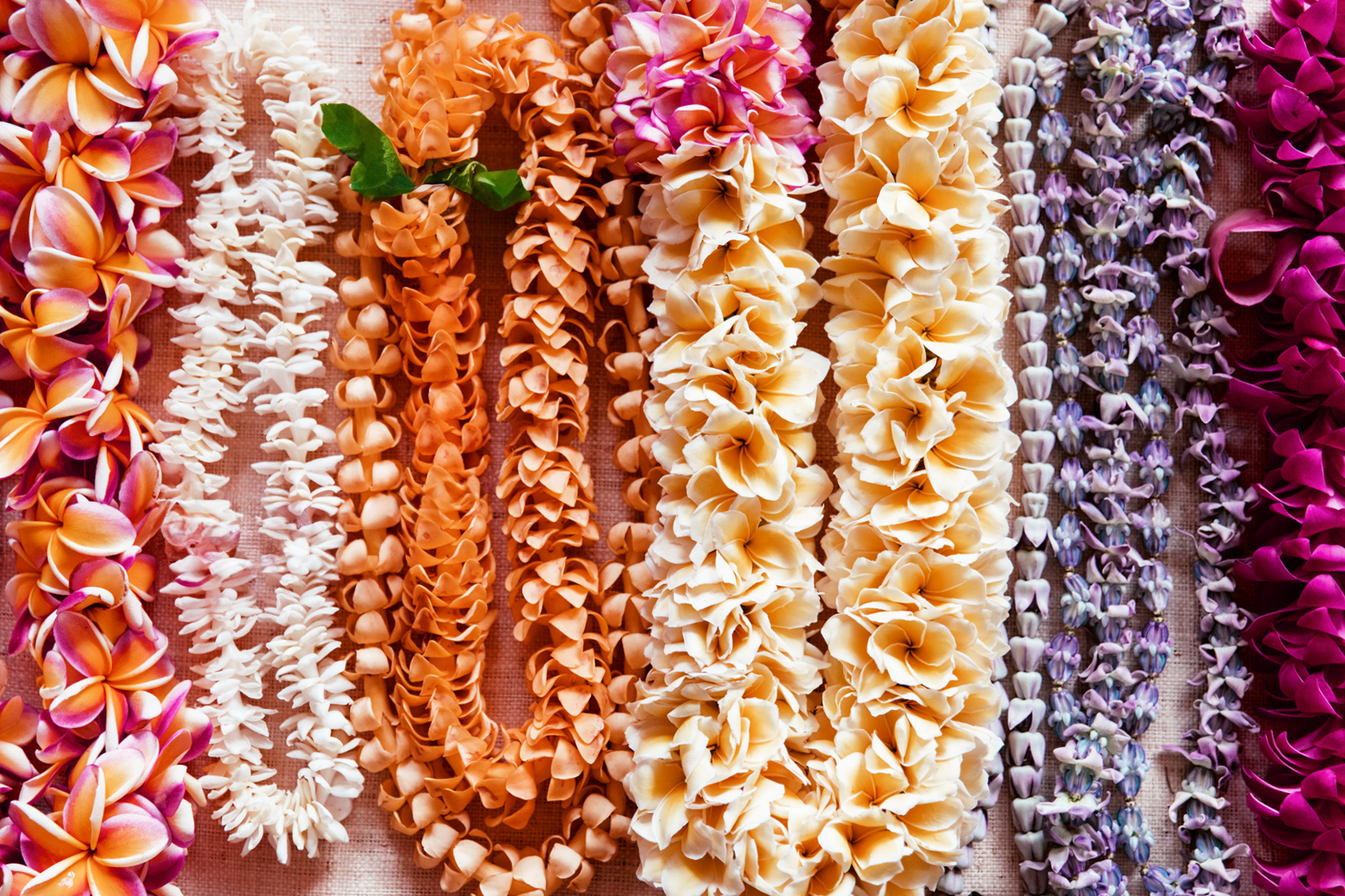When you think of Hawaii, one of the first images that may come to mind is the iconic flower lei. Drape one around your neck, and suddenly, you’re not just visiting the islands—you’re experiencing them. Leis are more than just beautiful floral arrangements; they are a symbol of Aloha, a deep-rooted cultural tradition, and an integral part of the Hawaiian spirit.
Whether you’re visiting during May Day, celebrating a special occasion, or want to embrace Hawaiian culture, this guide will take you deep into the world of leis—from their ancient origins to modern-day traditions.
A Blooming Tradition: The History of the Lei
The history of the Hawaiian lei stretches back centuries. Polynesian voyagers, the ancestors of Native Hawaiians, brought with them not just their agricultural practices and navigational skills but also the art of lei-making. In early Hawaii, leis were worn by both men and women as symbols of rank, status, and affection. Royalty often adorned themselves with intricately woven leis made from rare feathers, shells, or fragrant flowers.
Each island had its own preferred plants and lei styles, often connected to the native flora. The materials used, the style of braiding, and even the way leis were worn could indicate tribal affiliations, rituals, or spiritual beliefs.

What Is a Lei?
At its core, a lei is a garland or wreath. While many visitors associate leis with fragrant flowers, they can be made from almost anything: shells, seeds, nuts, feathers, leaves, or even candy. The unifying element is their circular shape, symbolizing love, unity, and the cycle of life.
In Hawaiian tradition, a lei is not merely a gift—it’s a gesture. It says, “I care about you,” “I honor you,” or simply, “You are welcome here.” The act of giving or receiving a lei is always done with reverence and Aloha.
May Day Is Lei Day in Hawaii
If you’re lucky enough to be in Hawaii on May 1st, you’ll be swept into one of the most joyful and flower-filled celebrations of the year: Lei Day.
Established in 1929 by poet Don Blanding, Lei Day is a celebration of Hawaiian culture, lei-making traditions, and the Aloha spirit. Every May 1st, communities across the islands come alive with festivals, music, hula, parades, and lei-making contests. Schools crown Lei Day kings and queens, and children perform dances dressed in traditional costumes, each representing a different island with its signature lei and flower.
It’s a uniquely Hawaiian holiday, as heartfelt as it is fragrant.

When and Why Leis Are Given
In Hawaii, leis are used to celebrate nearly every important life event:
- Welcoming Visitors: The classic airport lei greeting is not just a tourism gimmick—it’s a genuine expression of Aloha.
- Graduations: You’ll see graduates often buried under dozens of leis from proud friends and family.
- Birthdays: A lei can be a meaningful birthday gift, representing love and friendship.
- Weddings and Anniversaries: Couples often exchange leis to symbolize their enduring bond.
- Retirement or Farewell: Whether someone is leaving a job or moving away, leis mark transitions and send people off with love.
- Funerals and Memorials: Leis are also used to honor and remember the deceased, often floated on the ocean as a symbolic goodbye.

Types of Leis and What They Mean
The variety of leis is truly astounding. Each material has its own significance, and the style of weaving also adds a layer of meaning. Here are some common (and not-so-common) types:
1. Flower Leis
These are the most recognized and come in many varieties:
- Plumeria (Frangipani): With its sweet scent and bright petals, plumeria is a favorite for its beauty and availability. Common in simple leis.
- Pikake (Jasmine): Highly fragrant and often worn by brides, symbolizing romance and purity.
- Tuberose: Known for its intoxicating fragrance. Often blended with other flowers.
- Orchid: Durable and beautiful, orchids are frequently used for visitor leis and can last longer than more delicate flowers.
- Carnation: These leis are thicker and often used for graduations or formal events.
- Maile: Often considered the most sacred lei, made from a fragrant vine and worn open-ended. Common in weddings, hula, and blessings.
2. Leaf Leis
- Ti Leaf: Symbolizes good luck, protection, and healing. Sometimes twisted with flowers or left simple and green.
- Lauaʻe Fern: Often used in hula and rituals. Its earthy scent evokes a connection with the forest.
3. Seed and Nut Leis
- Kukui Nut: Polished to a dark sheen, kukui nuts are often worn by men. They symbolize enlightenment, protection, and peace.
- Job’s Tears: These silvery seeds add elegance and are sometimes used in combination with shells.
4. Feather Leis (Lei Hulu)
These are among the most elaborate and treasured leis. In ancient times, feather leis were worn by royalty and took months to complete. Today, they are heirlooms and pieces of art.
5. Shell and Bone Leis
Often made on outer islands like Niʻihau, these leis are rare and incredibly valuable. Niʻihau shell leis, known as lei pūpū, can fetch thousands of dollars and are often passed down for generations.
6. Candy and Ribbon Leis
Popular for graduations, these leis are a fun and modern twist. They may be made from colorful candies, money, or ribbons in school colors.
How to Give and Receive a Lei
Giving a lei is a respectful and heartfelt gesture. Here are some customs to keep in mind:
- Always present the lei by gently draping it over the recipient’s shoulders, allowing it to rest on both shoulders equally.
- Kissing on the cheek while giving a lei is common and reflects warmth and affection.
- Never refuse a lei—it’s considered impolite. If you’re unable to wear it (e.g., due to allergies), accept it with gratitude and carry it respectfully.
- Pregnant women are traditionally given open-ended leis to symbolize the uninterrupted flow of life.
Caring for a Lei
Fresh flower leis can last longer with proper care:
- Keep them refrigerated or cool.
- Place in a plastic bag with a damp paper towel to retain moisture.
- Some leis, like orchid or ti leaf leis, last several days, while others, like plumeria or tuberose, are best enjoyed on the same day.
Island-Specific Leis and Their Symbolism
Each of Hawaii’s main islands has its own official lei flower and color:
- Hawaiʻi (Big Island) – Red lehua flower; symbolizes Pele and volcanic power.
- Maui – Pink lokelani (Damask rose); associated with royalty and romance.
- Oʻahu – Yellow ʻilima; delicate and beautiful, representing honor.
- Kauaʻi – Purple mokihana (actually a berry); has a spicy scent.
- Molokaʻi – Green kukui; symbolic of enlightenment and protection.
- Lānaʻi – Orange kaunaʻoa vine; delicate and intertwined like love.
- Niʻihau – White pūpū shells; extremely rare and treasured.
- Kahoʻolawe – Gray hinahina; signifies resilience and strength.
Lesser-Known Facts About Leis
Here are a few tidbits you might not know:
- The “lei of aloha” spans around the world. On Lei Day, Hawaiians living abroad also celebrate—some even ship fresh leis across the mainland!
- Lei-making is a competitive art form. Events like the Lei Court in Honolulu showcase master lei-makers whose designs can be elaborate, intricate, and deeply symbolic.
- There’s a National Lei Museum. Housed in the Queen Emma Summer Palace, it features historic leis and displays honoring the royal heritage of lei-making.
- Some leis are meant to be thrown in the ocean. After a celebration, it’s tradition to return the lei to nature by placing it in the sea—especially if you’re hoping to return to the islands one day.

Lei-Making: A Cultural Experience for Visitors
Many resorts and cultural centers on the Big Island and other islands offer lei-making workshops. These hands-on classes are a wonderful way to connect with the culture, learn the art of braiding or twisting, and craft your very own keepsake.
Some recommended spots for lei-making classes on the Big Island:
- Isaacs Art Center (Waimea) – Occasional workshops by local artisans.
- Hawaii Volcanoes National Park – Cultural demonstrations during special events.
- Hilo Farmers Market – Sometimes hosts lei vendors who will teach visitors simple lei-making techniques.
Where to Buy or Order a Lei
If you’re looking to buy a lei for a special moment or to welcome friends and family:
- Airport Lei Services: Many companies offer lei greetings at arrival.
- Local Florists: Specialized in fresh, island-grown flowers.
- Local Grocery Stores: Look for leis in refrigerated flower sections
- Farmers Markets: Great for handmade and more affordable options.
- Craft Fairs and Festivals: Often feature local lei artisans.
On the Big Island, popular spots include:
- Aliʻi Gardens Marketplace (Kailua-Kona)
- Hilo Farmers Market
- Waimea Town Market
- Da Flower Shop (Kailua-Kona)
Lei Etiquette: The Do’s and Don’ts
Do:
- Wear your lei with pride.
- Return it to nature if possible (hang it on a tree or float it in the ocean).
- Share the meaning behind the lei with others.
Don’t:
- Toss it in the trash disrespectfully.
- Reuse someone else’s lei.
- Cut or alter a lei before giving it.
A Circle of Aloha
Whether you receive one upon arrival or craft one yourself during your stay, the Hawaiian lei is a lasting symbol of welcome, love, celebration, and connection. In Hawaii, the giving of a lei is not just tradition—it’s an act of Aloha, shared from heart to heart. So this May Day, or any day you find yourself in the islands, take a moment to wear a lei, learn its story, and let it wrap you in the beauty and warmth of Hawaii.
Happy Lei Day! Hauʻoli Lā Lei!
